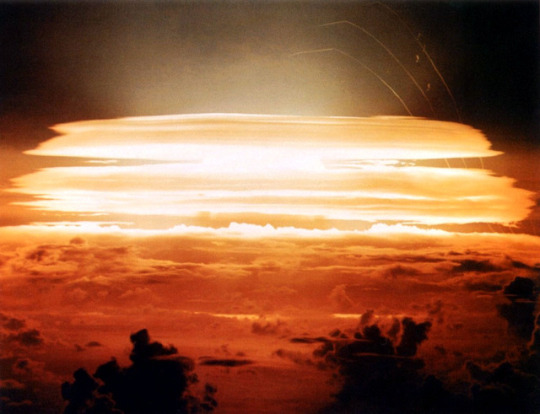Photo

Names for the different parts of multi-megaton nuclear mushroom clouds.
687 notes
·
View notes
Photo
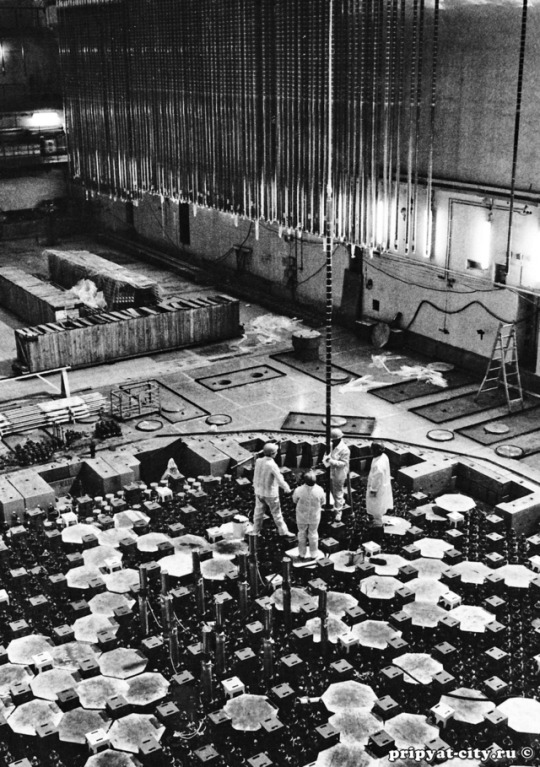
Lowering nuclear fuel into the completed reactor, Chernobyl
370 notes
·
View notes
Photo

Diagram by Captain Robert Lewis of the Enola Gay’s Aug. 6, 1945 bombing mission that decimated Hiroshima. A meticulous record-keeper, Lewis’s handwritten entry in his personal flight log for that historic day reads: “No #1 Atomic bomb a huge success.”
20 notes
·
View notes
Photo
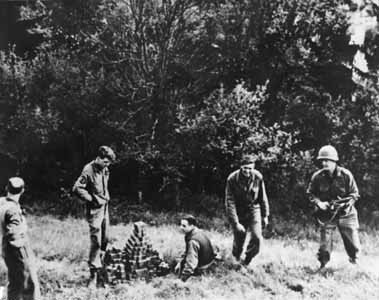
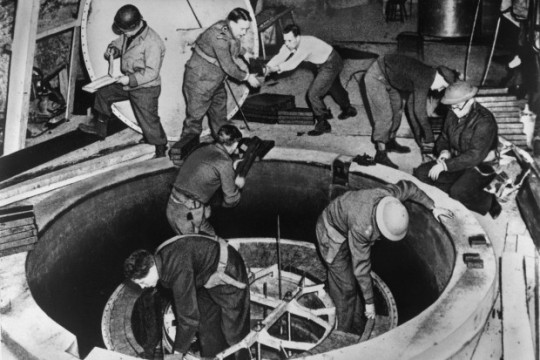

As part of the Manhattan Project, the Alsos Mission was an effort made by Allied powers to investigate the German nuclear energy project. Alsos Mission personnel followed close behind the front lines and occasionally behind enemy lines, searching for personnel, records, material and sites to evaluate the German nuclear project, to further American research, and to prevent their capture by the Soviet Union.
German prisoners, while in custody, indicated that uranium and thorium were being processed at a plant in Germany, and the plant was bombed by Allies on 15 March 1945. In early April 1945, an experimental centrifuge for separating uranium isotopes was uncovered. On 23 April 1945, in a laboratory in a cellar, a German experimental nuclear reactor shaped like a cylinder and made of graphite blocks was discovered by Alsos personnel, but the uranium and heavy water were absent. It was immediately dismantled. Later, a sealed drum of documents was retrieved from a cesspool and three drums of heavy water and 1.5 tons of uranium cubes were found buried in a field. The apertures in the cellar were destroyed with minor explosions.
Ultimately, the Alsos Mission contributed very little to the Allied defeat of Nazi Germany, largely due to the fact that the German nuclear and biological weapons programs turned out to be much smaller and far less threatening than had originally been feared.
Top photo: Alsos Mission personnel uncovered cubes of uranium hidden by German scientists in a field.
Middle photo: Alsos Mission personnel dismantle the experimental nuclear reactor German scientists had engineered as part of the German nuclear energy program.
Bottom photo: A replica of the German experimental nuclear reactor dismantled during the Alsos Mission.
73 notes
·
View notes
Photo
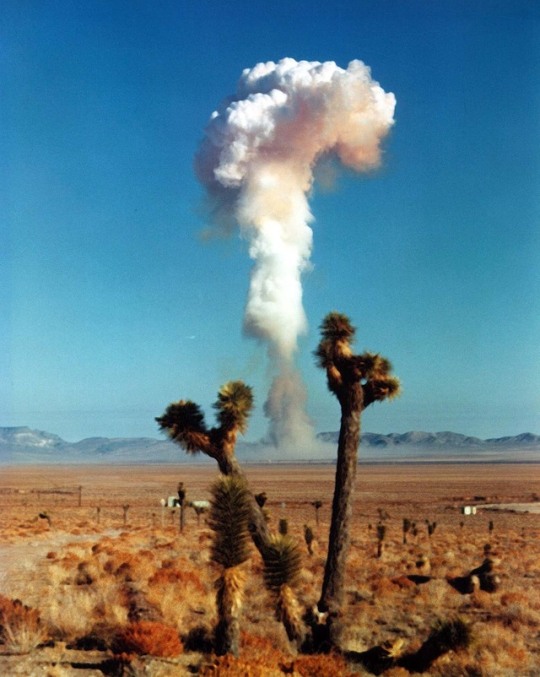
TODAY IN HISTORY: The 2.2-kiloton “De Baca” nuclear test goes off in the Nevada desert on October 26, 1958. It’s part of Operation Hardtack II.
243 notes
·
View notes
Text
Cuban Missile Crisis: Day 9
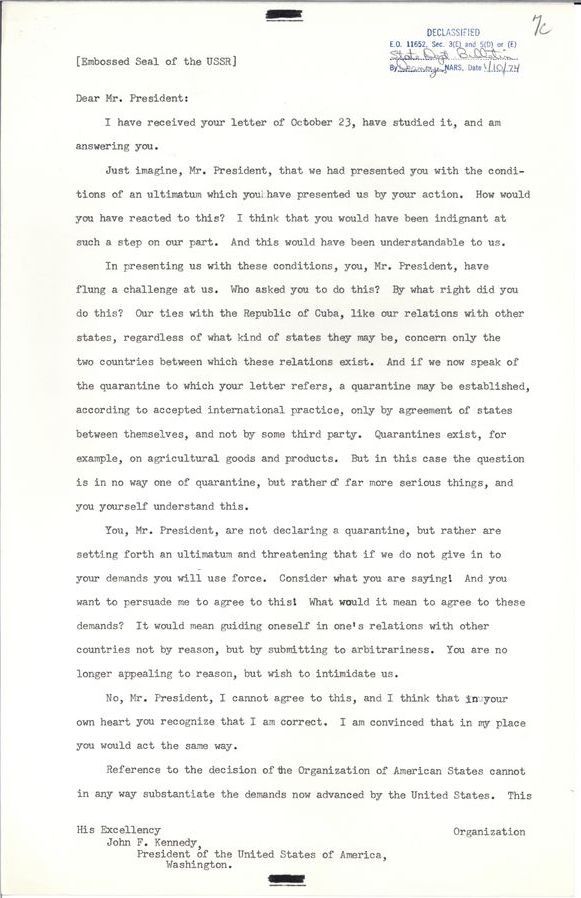
October 24, 1962 – Day 9 of the Cuban Missile Crisis
Nikita Khrushchev writes an incensed response to President Kennedy’s October 23rd letter announcing the naval quarantine of Cuba.
Dear Mr. President:
I have received your letter of October 23, have studied it, and am answering you.
Just imagine, Mr. President, that we had presented you with the conditions of an ultimatum which you have presented us by your action. How would you have reacted to this? I think that you would have been indignant at such a step on our part. And this would have been understandable to us.
In presenting us with these conditions, you, Mr. President, have flung a challenge at us. Who asked you to do this?
Read Khrushchev’s entire letter.
40 notes
·
View notes
Photo

Ad from the Atomic Energy Commission for the “Forty-Niner” civilian Geiger counter. The late ‘40s and early ‘50s saw the brief craze for “uranium prospecting”, hearkening back to the 1849 Gold Rush.
81 notes
·
View notes
Photo
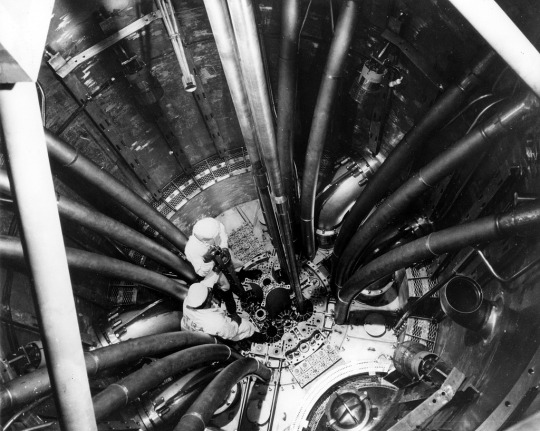
Technicians load fuel inside the pressure vessel of the 250-mw Advanced Test Reactor at the Atomic Energy Commission’s National Reactor Testing Station in Idaho.
c. 1967
76 notes
·
View notes
Photo

Dismantling of the German experimental nuclear pile at Haigerloch, Stuttgart, April 1945.
20 notes
·
View notes
Photo
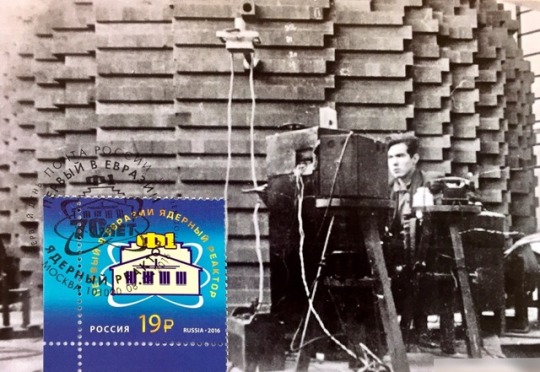
F-1 reactor at Kurchatov Institute. Stamp commemorates 70th anniversary of achievement of self sustaining chain reaction on 25 December 1946.
6 notes
·
View notes
Quote
In 1984, the German journal Zeitschrift für Semiotik (Journal of Semiotics) published a dozen responses from academics speculating on how to communicate across 10,000 years. The proposals range from the mundane to the bizarre and fantastical. One respondent proposes making the storage barrels impossible to open without great technical skill. Another involves creating a series of warnings in concentric circles that would expand as languages evolve. Thomas Sebeok is in there, elaborating on his system of rituals around an atomic priesthood and their rituals. But a pair of semioticians, Françoise Bastide and Paolo Fabbri, take the germ of Sebeok’s idea for a nuclear folklore to a singularly strange conclusion.
Their solution is “ray cats,” creatures bred to change color in the presence of radiation—like walking, purring, yarn-chasing Geiger counters. But this is just the first part of the proposal. Alongside the cats, Bastide and Fabbri propose that we invent a body of folklore, passed on through proverbs and myths to explain that when a cat changes color, you better run.
“The Cat Went Over Radioactive Mountain” from Method Quarterly
(via principleofplenitude)
99 notes
·
View notes
Link
Petrov, thinking that any U.S. attack should have involved even more missiles to limit the chance of Soviet retaliation, told his Kremlin bosses the alert must have been caused by a malfunction. He persuaded Moscow not to shoot back.
It was later determined that Russian satellites must have mistaken sunlight reflecting off clouds for nuclear missiles.
Petrov’s reward? He was chastised for failing to provide proper paperwork, he said.
486 notes
·
View notes
Photo

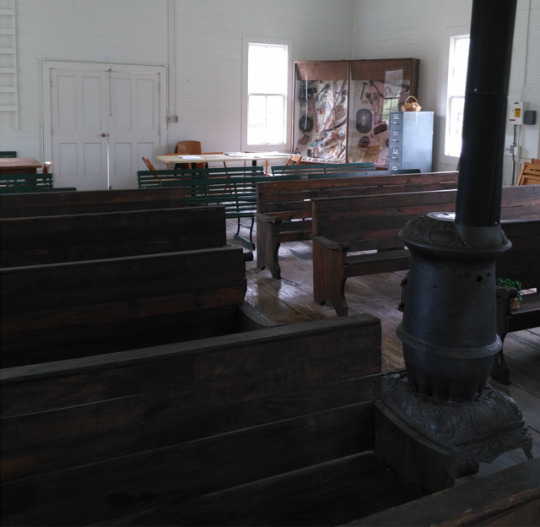
⚛ New Bethel Baptist Church / ORNL
The New Bethel Baptist Church is the only remaining building of the Scarboro community before the surrounding land was bought by the US government. In 1942, the area of Bethel Valley was acquired for around $45 an acre, leaving its former residents to vacate. Most buildings were destroyed to make room for the X-10 site, but the church remained as a useful meeting place to planners close by.
Inside the building today, there are many photos and artifacts dating back to prior times. The cabinets and photos memorialize those who lost their homes as a sacrifice to victory. Behind the church is a small graveyard, many of the gravestones still intact. Unfortunately, taking pictures of the outside of structures on-site at this time is strongly discouraged, so there are none shown here.
Officially, the church opened in 1851 and closed in 1942. The church’s interior is still accessible and on display.
6 notes
·
View notes
Photo
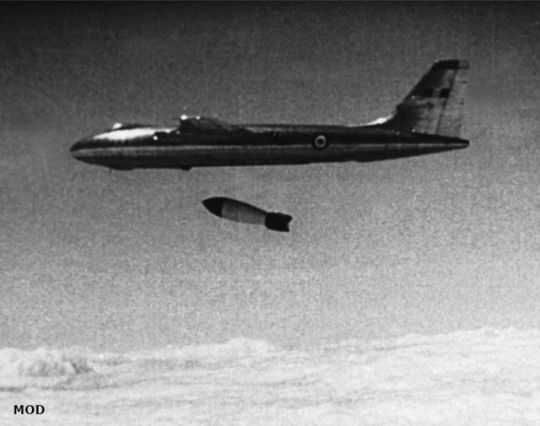
1956, a RAF Vickers Valiant B.1 bomber, dropped a Mk.1 Atom Bomb at the Maralinga Test Range, South Australia.
139 notes
·
View notes







